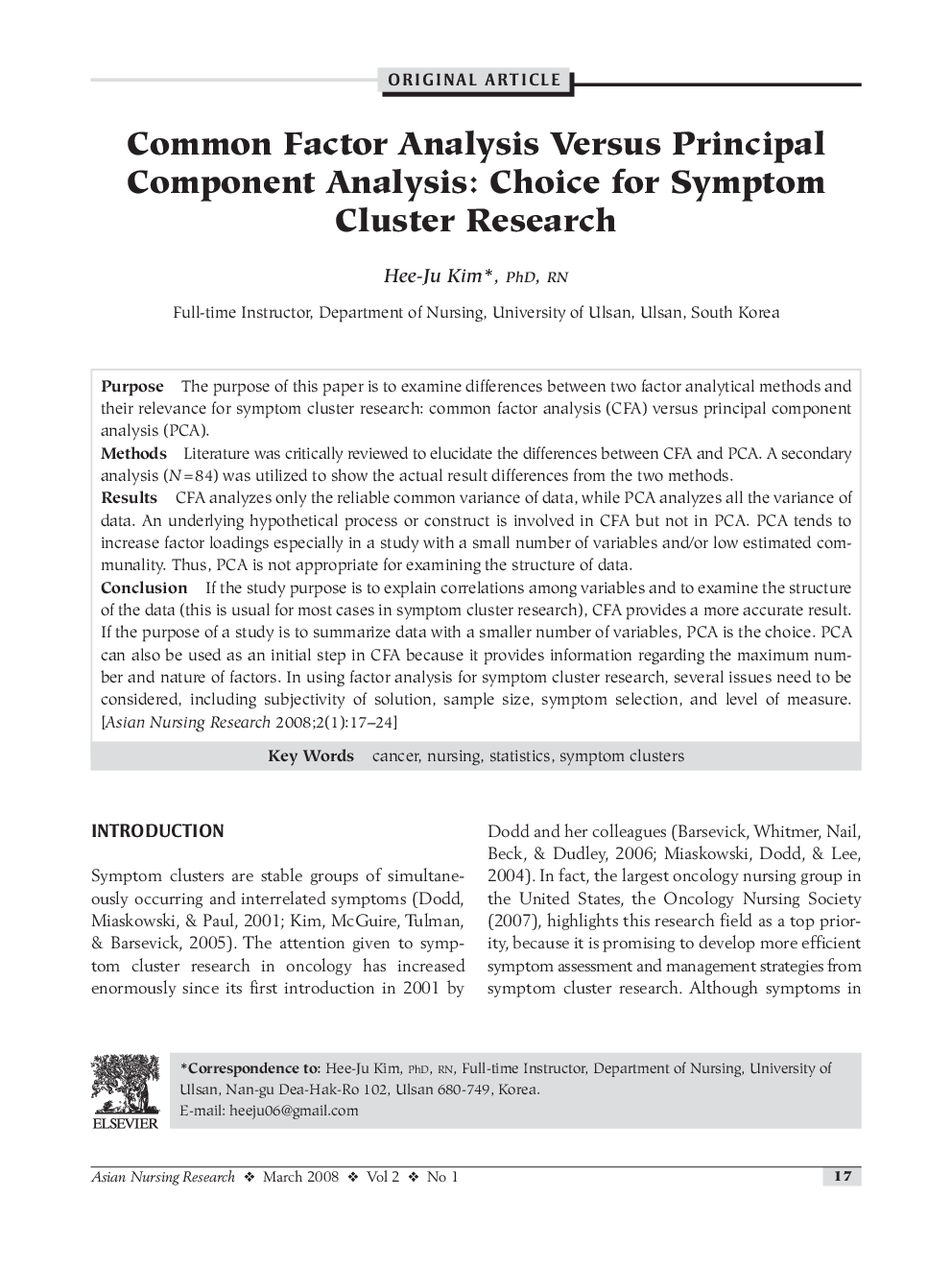| کد مقاله | کد نشریه | سال انتشار | مقاله انگلیسی | نسخه تمام متن |
|---|---|---|---|---|
| 2645580 | 1138598 | 2008 | 8 صفحه PDF | دانلود رایگان |

PurposeThe purpose of this paper is to examine differences between two factor analytical methods and their relevance for symptom cluster research: common factor analysis (CFA) versus principal component analysis (PCA).MethodsLiterature was critically reviewed to elucidate the differences between CFA and PCA. A secondary analysis (N = 84) was utilized to show the actual result differences from the two methods.ResultsCFA analyzes only the reliable common variance of data, while PCA analyzes all the variance of data. An underlying hypothetical process or construct is involved in CFA but not in PCA. PCA tends to increase factor loadings especially in a study with a small number of variables and/or low estimated communality. Thus, PCA is not appropriate for examining the structure of data.ConclusionIf the study purpose is to explain correlations among variables and to examine the structure of the data (this is usual for most cases in symptom cluster research), CFA provides a more accurate result. If the purpose of a study is to summarize data with a smaller number of variables, PCA is the choice. PCA can also be used as an initial step in CFA because it provides information regarding the maximum number and nature of factors. In using factor analysis for symptom cluster research, several issues need to be considered, including subjectivity of solution, sample size, symptom selection, and level of measure.
Journal: Asian Nursing Research - Volume 2, Issue 1, March 2008, Pages 17-24